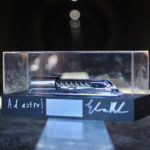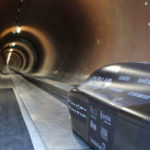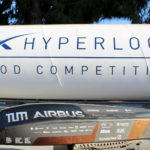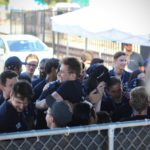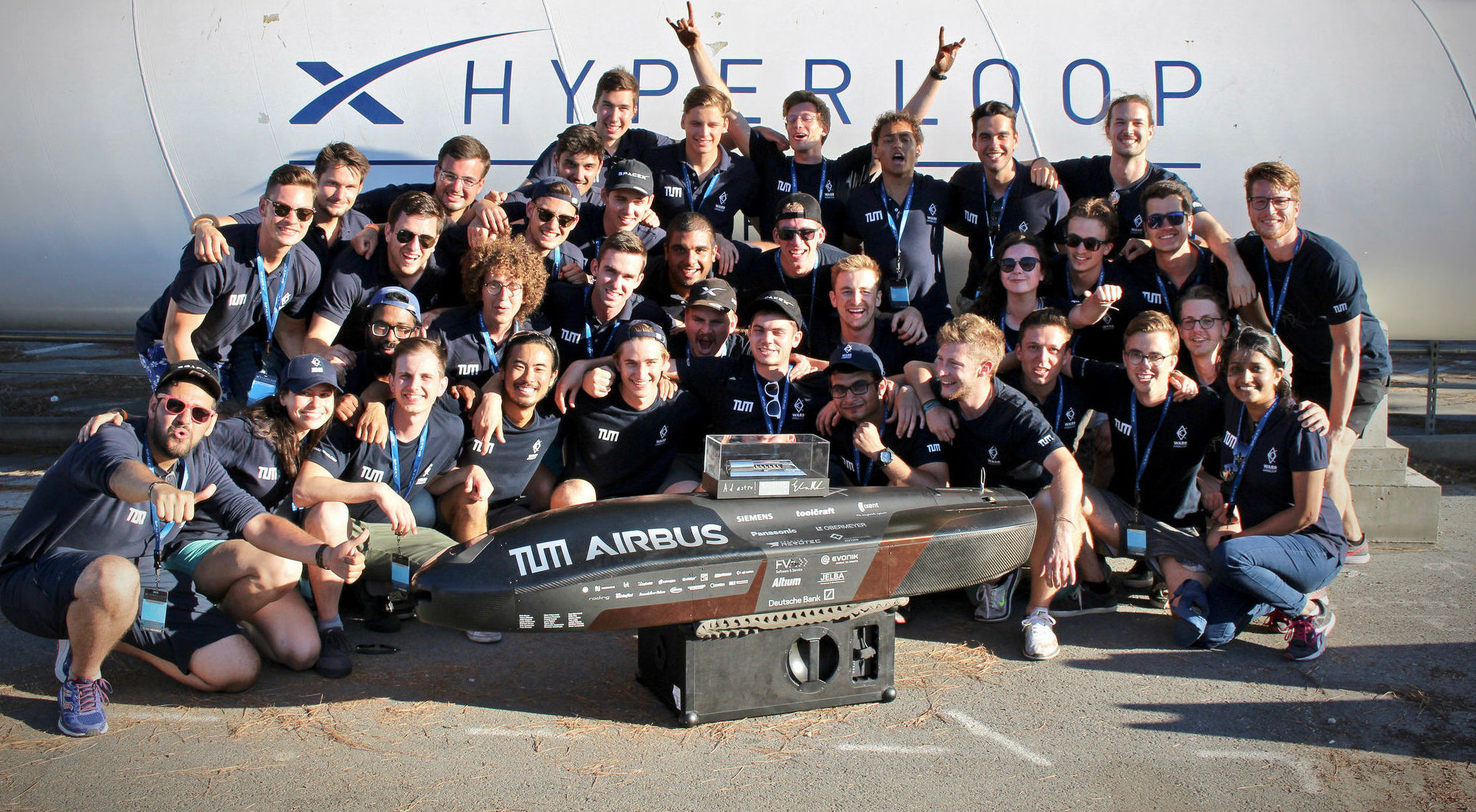
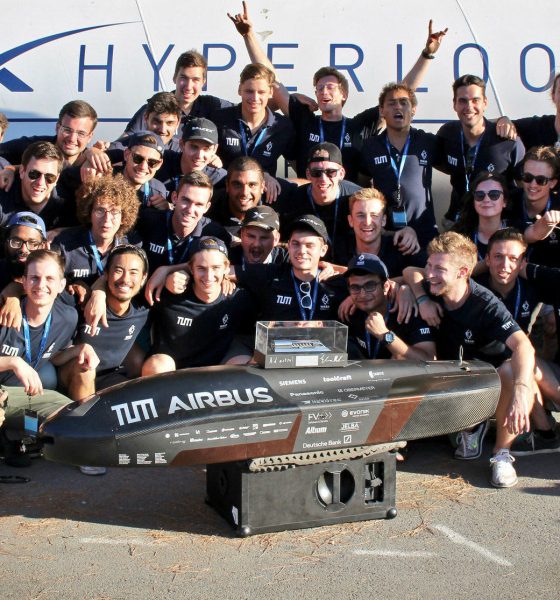
News
Elon Musk crowns WARR Hyperloop with 3rd consecutive win after record-breaking 290 mph run
WARR Hyperloop, a team of students from the Technical University of Munich, has been dubbed as the overall winner of the 2018 Hyperloop Pod Competition. During its winning runs, Team WARR’s sleek, aerodynamic pod was able to propel itself to speeds of 290 mph, breaking the record set last December by Virgin Hyperloop One’s pod, which hit the 240 mph mark.
As noted by SpaceX on the event’s official page, the competition for 2018 would be focused on a single criterion — maximum speed. This year’s competition only had a couple of requirements for the teams participating in the event. The Hyperloop Pods must be self-propelled, and they have to be fast. Very, very fast.
https://twitter.com/WARR_Hyperloop/status/1021256781106835457
Achieving top speed in SpaceX’s Hyperloop test track on its headquarters in Hawthorne, CA, is a challenge in itself. The test track, after all, is only 0.8 miles long, which requires the self-propelled pods to accelerate hard immediately from a standstill. In a press release last month, Team WARR stated that they are hoping to achieve 372 mph (600 kph) in this year’s competition. The team’s pod ultimately did not hit 372 mph, but its 290 mph run was enough to crown it the winner of this year’s Hyperloop event.
Elon Musk was in attendance at the 2018 Hyperloop Pod Competition. For their feat, Team WARR received a special token from the Tesla and SpaceX CEO — a signed, metallic model of Musk’s original Hyperloop pod design. With this win, WARR Hyperloop has managed to establish itself as the team to beat in SpaceX’s competition. The team of students from Munich, after all, has garnered the fastest pod award for three consecutive events.
- A token for the winning team, from Elon Musk. [Credit: WARR Hyperloop]
- WARR Hyperloop’s pod inside SpaceX’s test track. [Credit: WARR Hyperloop]
- WARR Hyperloop’s pod. [Credit: WARR Hyperloop]
- Team WARR celebrates after winning the 2018 SpaceX Hyperloop Pod Competition. [Credit: WARR Hyperloop]
- Elon Musk congratulates Team WARR for winning the 2018 SpaceX Hyperloop Pod Competition. [Credit: WARR Hyperloop]
WARR Hyperloop wins the 2018 SpaceX Hyperloop Pod Competition. [Credit: WARR Hyperloop/Flickr]
The three finalists for the 2018 Hyperloop Pod Competition were formidable teams. Apart from Team WARR, Team Delft from the Netherlands, which won the overall best pod award in SpaceX’s first Hyperloop competition, was also present. EPF Loop from Switzerland was also a finalist. When it came to the actual top speed attempts, Delft Hyperloop and EPF Loop were faced with misfortune.
Team Delft’s Hyperloop pod, for one, was only able to attain a top speed of 88 mph before stalling. The pod, which was the latest iteration of its winning design during the first Hyperloop Competition, was already showing problems in the week leading up to the event, including a fried circuit board not long before the competition. EPF Loop, on the other hand, was also met with complications that ultimately caused its pod to accelerate to speeds of only 55 mph.
Ultimately, WARR Hyperloop’s victory could very well be due to the engineering that went to the team’s pod itself. As noted by WARR Hyperloop in a press release, this year’s pod has been upgraded from a 50 kW electric motor to a system employing eight smaller electric motors with a total output of 240 kW or 320 hp. The pod is also smaller than its predecessor and is more aerodynamic in shape, allowing it to accelerate and stop without any problems.
Watch WARR Hyperloop’s teaser for its pod in the video below.

News
Tesla FSD fleet is nearing 7 billion total miles, including 2.5 billion city miles
As can be seen on Tesla’s official FSD webpage, vehicles equipped with the system have now navigated over 6.99 billion miles.

Tesla’s Full Self-Driving (Supervised) fleet is closing in on almost 7 billion total miles driven, as per data posted by the company on its official FSD webpage.
These figures hint at the massive scale of data fueling Tesla’s rapid FSD improvements, which have been quite notable as of late.
FSD mileage milestones
As can be seen on Tesla’s official FSD webpage, vehicles equipped with the system have now navigated over 6.99 billion miles. Tesla owner and avid FSD tester Whole Mars Catalog also shared a screenshot indicating that from the nearly 7 billion miles traveled by the FSD fleet, more than 2.5 billion miles were driven inside cities.
City miles are particularly valuable for complex urban scenarios like unprotected turns, pedestrian interactions, and traffic lights. This is also the difference-maker for FSD, as only complex solutions, such as Waymo’s self-driving taxis, operate similarly on inner-city streets. And even then, incidents such as the San Francisco blackouts have proven challenging for sensor-rich vehicles like Waymos.
Tesla’s data edge
Tesla has a number of advantages in the autonomous vehicle sector, one of which is the size of its fleet and the number of vehicles training FSD on real-world roads. Tesla’s nearly 7 billion FSD miles then allow the company to roll out updates that make its vehicles behave like they are being driven by experienced drivers, even if they are operating on their own.
So notable are Tesla’s improvements to FSD that NVIDIA Director of Robotics Jim Fan, after experiencing FSD v14, noted that the system is the first AI that passes what he described as a “Physical Turing Test.”
“Despite knowing exactly how robot learning works, I still find it magical watching the steering wheel turn by itself. First it feels surreal, next it becomes routine. Then, like the smartphone, taking it away actively hurts. This is how humanity gets rewired and glued to god-like technologies,” Fan wrote in a post on X.
News
Tesla starts showing how FSD will change lives in Europe
Local officials tested the system on narrow country roads and were impressed by FSD’s smooth, human-like driving, with some calling the service a game-changer for everyday life in areas that are far from urban centers.

Tesla has launched Europe’s first public shuttle service using Full Self-Driving (Supervised) in the rural Eifelkreis Bitburg-Prüm region of Germany, demonstrating how the technology can restore independence and mobility for people who struggle with limited transport options.
Local officials tested the system on narrow country roads and were impressed by FSD’s smooth, human-like driving, with some calling the service a game-changer for everyday life in areas that are far from urban centers.
Officials see real impact on rural residents
Arzfeld Mayor Johannes Kuhl and District Administrator Andreas Kruppert personally tested the Tesla shuttle service. This allowed them to see just how well FSD navigated winding lanes and rural roads confidently. Kruppert said, “Autonomous driving sounds like science fiction to many, but we simply see here that it works totally well in rural regions too.” Kuhl, for his part, also noted that FSD “feels like a very experienced driver.”
The pilot complements the area’s “Citizen Bus” program, which provides on-demand rides for elderly residents who can no longer drive themselves. Tesla Europe shared a video of a demonstration of the service, highlighting how FSD gives people their freedom back, even in places where public transport is not as prevalent.
What the Ministry for Economic Affairs and Transport says
Rhineland-Palatinate’s Minister Daniela Schmitt supported the project, praising the collaboration that made this “first of its kind in Europe” possible. As per the ministry, the rural rollout for the service shows FSD’s potential beyond major cities, and it delivers tangible benefits like grocery runs, doctor visits, and social connections for isolated residents.
“Reliable and flexible mobility is especially vital in rural areas. With the launch of a shuttle service using self-driving vehicles (FSD supervised) by Tesla in the Eifelkreis Bitburg-Prüm, an innovative pilot project is now getting underway that complements local community bus services. It is the first project of its kind in Europe.
“The result is a real gain for rural mobility: greater accessibility, more flexibility and tangible benefits for everyday life. A strong signal for innovation, cooperation and future-oriented mobility beyond urban centers,” the ministry wrote in a LinkedIn post.
News
Tesla China quietly posts Robotaxi-related job listing
Tesla China is currently seeking a Low Voltage Electrical Engineer to work on circuit board design for the company’s autonomous vehicles.

Tesla has posted a new job listing in Shanghai explicitly tied to its Robotaxi program, fueling speculation that the company is preparing to launch its dedicated autonomous ride-hailing service in China.
As noted in the listing, Tesla China is currently seeking a Low Voltage Electrical Engineer to work on circuit board design for the company’s autonomous vehicles.
Robotaxi-specific role
The listing, which was shared on social media platform X by industry watcher @tslaming, suggested that Tesla China is looking to fill the role urgently. The job listing itself specifically mentions that the person hired for the role will be working on the Low Voltage Hardware team, which would design the circuit boards that would serve as the nervous system of the Robotaxi.
Key tasks for the role, as indicated in the job listing, include collaboration with PCB layout, firmware, mechanical, program management, and validation teams, among other responsibilities. The role is based in Shanghai.
China Robotaxi launch
China represents a massive potential market for robotaxis, with its dense urban centers and supportive policies in select cities. Tesla has limited permission to roll out FSD in the country, though despite this, its vehicles have been hailed as among the best in the market when it comes to autonomous features. So far, at least, it appears that China supports Tesla’s FSD and Robotaxi rollout.
This was hinted at in November, when Tesla brought the Cybercab to the 8th China International Import Expo (CIIE) in Shanghai, marking the first time that the autonomous two-seater was brought to the Asia-Pacific region. The vehicle, despite not having a release date in China, received a significant amount of interest among the event’s attendees.
